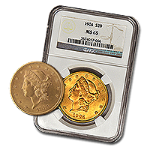For decades, India has been a global leader in physical precious metals imports. Specifically, Indian consumers love gold, and have historically bought a lot of it. But recently, the Indian government has attempted to reduce the demand for physical gold and other precious metals in an effort to fix some of its national economic problems.
Specifically, the Indian government has increased the import duty tax on both gold and silver this week. This is not the first time the Indian government has made this move in recent months. The latest increase put the import duty tax at 10% for gold (up from 8%) and 10% for silver (up from 6%). Both are significant increases, especially silver, and especially given that the import tax was already increased not so long ago. While gold is the more popular metal, some Indian investors and consumers have turned to silver as a cheaper, more affordable alternative. The significant import tax increase from 6% to 10%may reverse that trend however.
The country’s finance ministry recently pledged to reduce India’s account deficit. According to the finance ministry, reducing the demand for physical precious metals amongst Indian consumers is a key tactic in achieving that goal. The government is trying to combat the decline of its national currency, the rupee. The rupee recently fell to a record low in terms of value against the dollar, and by making precious metals more expensive for its people, the government hopes that India’s population invests more in its own currency than in precious metals. The decline of the rupee is certainly a challenge for the government, which may feel embarrassed about the trend of investing in precious metals over its own currency. Hence, the import tax continues to rise.
Decreasing demand in India creates opportunity for investors around the world. Specifically, China seems to be benefitting the most, as it has recently seen large increases in demand and imports of physical gold and other precious metals. China is the world’s leader in physical gold imports, and recently took over that spot from India, which held on to that claim for many years. Investors in the U.S. and North America can also benefit from the decreased demand of physical gold in India, as more supply is available and prices are relatively low. However, with Chinese investors making such aggressive moves, the window of opportunity to capitalize on India’s decreased demand may be closing.











